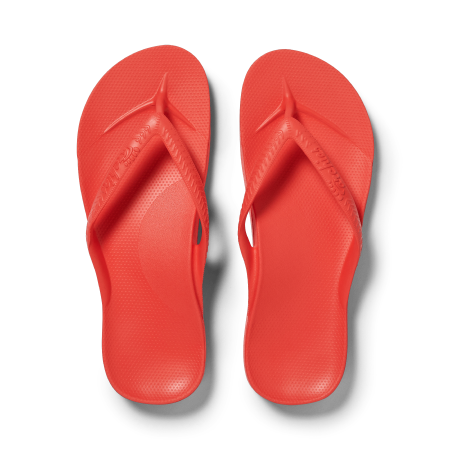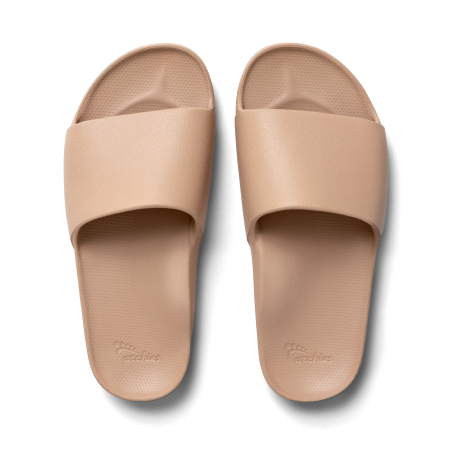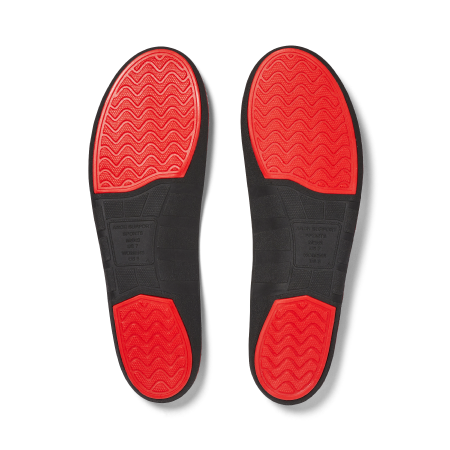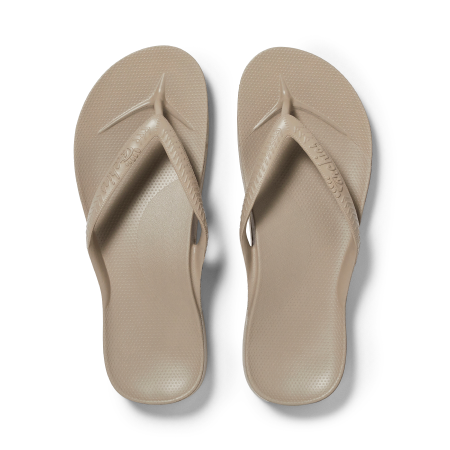Most Common Causes of Foot Pain and What You Can do About Them
Recent studies have shown that nearly 77% of people, aged 18 and over have been adversely affected by foot pain at some point. One would think that in the age of tech revolution our rate of overuse injuries would decline as our screen time increased and activity decreased.
What is clear is that no matter what age we’re in, aching feet will be an issue for a vast majority of the population at some point in their lives.
Below are some of the most common reasons why your feet might be killing you and some things that you can do to help these issues and conditions go away.
As always, correcting the factors that have caused the condition in the first place is the most important thing to do. Please understand you can never apply a recipe to everyone’s problem as the exact causative factors will be different for each person. As such, the advice below is only general advice and you should always seek the care of healthcare professional.
Plantar Fasciitis
Plantar Fasciitis is an overuse injury that causes degeneration to the plantar fascia. It is by far one of the most common injuries affecting the foot. The Plantar fascia is not a muscle, but connective tissues (like a tendon) that attach the heel bone to the toes. The condition is mistakenly reported as being inflammatory, however, despite of what you read, studies involving the tissue of those with the condition actually fail to show any inflammatory markers. Basically, the condition does not involve inflammation and this is well supported in the Sports Medicine and Podiatric Community (leaders in this field).
Onset
- Can occur acutely in a specific incident such as carrying heavy shopping or landing the foot awkwardly while running.
- May occur gradually with pain coming on over a prolonged period of time.
- For example, many runners go to a podiatrist questioning how they hadn’t noticed the pain during their race. This is because the plantar fascia acts as the foot’s shock absorber, and simultaneously supports the arch. Adding too much stress to these shock absorbing bands can result in small tears. While painless in the moment, once the body cools down, the pain can become apparent.
Symptoms
- The condition can be very painful and may feel like a stone bruise on the inside of heel where it joins to the arch.
- Pain is often worse with apparent in moments of inactivity. The condition may be worse after sitting down for a while and then getting up.
- A long distance runner with Plantar Fasciitis may not notice any pain in the midst of their run, but instead once they have allowed their body to return to a restful state.
- A common feature is morning pain and it is particularly painful on the first few steps until you warm up.
Risk Factors
- There is not normally just one risk factor or cause of the condition, there are usually a number of factors at play.
- Age - Generally occurs in those of older age. Those aged between forty and sixty years old are more likely to be diagnosed with plantar fasciitis.
- Overweight - Individuals with a higher than normal BMI tend to put more stress on the structures of their feet which increases the stress on the plantar fascia which can cause microtears to occur.
- Poor foot Mechanics – People with flat feet and people who overpronate (roll in) puts increased stress on the plantar fascia as the plantar fascia overworks to try and support the arch. People with high arches can also get the condition as their foot is generally more rigid and has poor shock absorbing capacity which puts more strain on the plantar fascia.
- Weak and tight muscles such as weak or tight calves affects the ability to absorb shock which means it will be transferred to the muscles, tendons and fascia of the feet.
- Inappropriate Footwear – Wearing flat non supportive footwear increases the risk of plantar fasciitis as it’s increases the strain on the plantar fascia. Wearing shoes with poor shock absorbing capacity means the plantar fascia will absorb more stress. Flip-flops with no arch support and loose straps are common causes of plantar fascia as the foot is left unsupported increasing the stress on the arch. Flip-flops/thongs with loose causes toe gripping and alters the normal walking pattern.
- Diabetes – As blood flow is reduced in this condition, this effects the strength and healing of the plantar fascia.
What to do about it
- Addressing factors that are causing the problem is the best place to start. If you don’t address these factors the condition will persist.
- Losing weight – Can be hard when your foot is sore. Swimming and exercise bike and a healthy diet are a good place to start.
- Strengthening weak muscles and stretching tight ones such as tight calves.
- Foot rollers, spikey balls or golf balls to massage the sore area.
- Ice to help with pain relief.
- Wearing supportive and shock absorbent footwear. Runners and arch support flip-flops/thongs/sandals are a good choice.
- In fact, flip-flops and thongs with arch support and a tighter strap have been shown to be effective in the treatment of foot pain. They are particularly useful to wear around the house when you’re not wearing your runners. Rather than working around non supported on hard floor boards and tiles, wear the flip-flops in and around the house to allow your plantar fascia to get the support it needs and providing shock absorption.
- See your Podiatrist or Physiotherapist! They are the experts in treating this condition. They will asses your foot and identify the causes and design you a treatment plan. They may prescribe exercise, stretches, orthotics, massage or shockwave therapy.
Achilles Tendonitis
The Achilles tendon is a band of tissue that connects the lower calf muscle to the heel bone. This Tendon is imperative to the ability to walk, jump, and climb, as it provides the ability to pull the heel upward.
Just like Plantar Fasciitis, Achilles Tendonitis is an overuse injury that causes degeneration to the fibers of the Achilles tendon. Also, despite the condition being called a tendonitis (which implies inflammation) by the general public, the condition is actually correctly known in the medical community as Achilles tendinosis (which implies tendon degeneration rather than inflammation).
Onset
- Can occur gradually and may progressively worsen with time.
- May occur after a specific training session, such as going for a big run on a hard road.
- May occur after going for a long walk in flat heeled, non-supportive footwear.
Symptoms
- Pain in normally the calf and Achilles region. Is normally a dull ache and the tendon may feel stiff, but as the condition worsens, it can become sharp.
- The pain will normally be worse with periods of inactivity and will typically improve as you warm up.
- The affected area is often tender to touch and occasionally may have palpable nodules.
Risk Factors
- Sex - The condition is most commonly seen in men, however, it can occur in both sexes.
- Age - As a degenerative disorder, Achilles tendinitis tends to present between the ages of 30 and 40, but will become more likely with increased age.
- Running / training on hard surfaces such as asphalt or concrete which have little shock absorbing capacity means the stress is transferred to the Achilles.
- A sudden increase in intensity or duration of exercise as the load is often too much for the Achilles to handle at once.
- Poor core stability which affects the way the limbs contact the ground when walking and running.
- Tight and weak calf muscles which affects the shop absorbing capacity of the lower limbs resulting in the stress being transferred to the Achilles.
- Wearing flat heeled footwear places the Achilles on excessive stretch.
- Wearing footwear with no arch support which affects foot posture can produce a “whipping” like action on the Achilles which damages the Achilles fibers
What to do about it
- Making sure you wear footwear that has some heal elevation (all good running shoes do) and good support as when the heel is too low to the ground, it places the Achilles on excessive stretch.
- In shoes that are flat and do not have any heel elevation, adding a heel lift to the shoes can help take some load off the Achilles. Heel lifts can be purchased from a Podiatrist.
- Making sure casual items of footwear such as sandals and flip-flops have arch support.
- Wearing flip-flops around the house instead of walking around bare feet as they will provide support and shock absorption.
- Train on softer surfaces such as grass instead of asphalt/ concrete.
- Consider decreasing the frequency of your training, for example, instead of running 5 times per week, you may reduce this to 3 days per week and consider replacing those training sessions with swimming of cycling.
- Stretches and massage for tight calves if indicated.
- Improving core stability, as when this is weak it will affect the stability of the lower limbs which will cause abnormal forces to be transferred to the Achilles.
- Heel drop exercises – In addition to correcting the factors that caused the condition in the first place, the heel drop exercise has been shown to be the most effective exercise to fix this issue. The heel drop involves standing on the edge of a step and standing up on the tippy toes and then lowering down slowly.
- See your Physiotherapist! They are the experts in treating this condition. They will asses your foot and identify the causes and design you a treatment plan. They will prescribe exercise with the exact amount and frequency, stretches and may refer you to a Podiatrist for your feet to be assessed.
Sprains of the Foot and Ankle
A ligament sprain of the foot or ankle is a very common injury of the ligaments that connect one bone to another. When a foot is sprained it most commonly means that certain ligaments have been overstretched and as a result, they’ve sustained tears of varying degrees.
Sprains vary in severity and will typically be classified as Grade 1, 2 or 3. The grade refers to how severe the ligament tears are and whether or not the fibers are still intact.
A foot sprain most commonly refers to an injury of the Midfoot or arch. These sprains are commonly due to sports related collisions, however, nearly a third of cases result from accidental falls.
In some cases the sprain may affect the ligaments within the first metatarsophalangeal joint, otherwise known as the joint at the base of the big toe. This sprain is typically a hyperextension injury and has earned the moniker “turf-toe” because of it’s close relation to sports like ballet, football, and soccer.
Lateral ankle sprains are also very common. This normally occurs when someone playing sport goes to change direction or when landing from a jump awkwardly such as landing on someone else’s foot.
Onset
- Always occurs with a specific sudden incident.
Symptoms
- Varying degrees of tenderness over the affected area’s where two different bones join together.
- Generally speaking, the more painful, the more severe will be the ligament damage. However, in some cases, when the ligament is completely ruptured, this can sometimes be painless.
- There is often associated swelling and inflammation which is also often proportional to the severity of the injury. Again, the more swelling the more severe the injury.
- IMPORTANT! If you are unable to weight bear after the injury, this may indicate that one of the underlying bones has been fractured. If you are unable to weight bear you should seek medical attention.
Risk Factors
- Sprains of the foot are seen incredibly common in both athletes and non-athletes. From ballet to snowboarding or even just walking the dog, no one is immune from spraining their foot or ankle.
- A history of past sprains is one of the most influential factors of whether you will sprain your ankle again. Once the ligaments are stretched often there can be some ongoing laxity in the ligaments.
- Carrying excess weight can add stress to the bones, tendons, and ligaments in load bearing extremities. This excess weight can contribute to sprains by bringing more weight down on ligaments that are in a potentially injurious situation.
- Studies have suggested that females, aged thirty and above, are also more likely to sprain their foot or ankle. Regardless of their activity level.
- Fatigue is a common risk factor in sprains of the foot and ankle. As an athlete nears the end of a sporting event, they are more likely to “push through” and resulting in a less agile mind and body to be able to get the body out of a injurious situation.
- Medical conditions that involve hypermobile joints, ligaments, and bones will easily lead to sprains. Those affected, should seek the advice of a doctor before engaging in high intensity sports or activities.
What to do
- If a minor sprain only, with minor pain and swelling, then this should heal fairly quickly and normally should not require any medical intervention. However, if in any doubt, it’s always best to get a medical opinion.
- If pain and swelling is moderate-substantial or there is any bruising, then it’s best to seek medical advice. A Physiotherapist/Physical Therapist are best suited to assess this and provide an appropriate treatment plan.
- If you are unable to weight bear, then this could be a sign of an underlying fracture, in this case it’s important to seek medical attention immediately. Also important, if you experience any pins and needles, tingling or numbness as the result of your injury then always seek medical attention.
- Unless advised by your medical professional to do so, avoid takings anti-inflammatory medication in the first 48-72 hours as these drugs can interfere with the normal healing process.
- Use ice to control swelling immediately after the injury. The RICER principle should be used. Rest, Ice, Elevation, Compression & Rest (such as on crutches).
- One of the most important things is that the swelling is managed and moved out of the foot and ankle. This is because if the swelling is not moved out of the ankle it can harden within the tissue making the foot and ankle very stiff which can cause a myriad of problems later down the track.
- After the initial pain and swelling has gone down, then making sure a strength and balance regime is conducted to re-strengthen muscles that have weakened as a result of not being full active through the ankle joint.
- You may need to tape the ankle or wear a brace to prevent occurrences from happening again. However, where possible, try to strengthen the ankle naturally as much as possible.
- Make sure your footwear is appropriate when you have injured your ankle. Wearing supported shoes such as running shoes are best when your ankle is injured. Sometimes swelling will make it difficult to get your normal shoes on properly. In this case, arch supported flip-flops/thongs/sandals are best.
Gout
Gout, often called gouty arthritis, is a condition that causes joint damage as a result of build up uric acid in the bloodstream. Uric acid comes into play when the body breaks down purines, substances that occur naturally within the body. Purines are also found in foods like fructose, seafood, steak, and alcoholic beverages.
In ideal situations uric acid tends to dissolve in the blood system and pass through the kidneys. However, the body is capable of producing too much uric acid or filtering too little uric acid. This will lead to the formation of urate crystals which are painful, needle like structures that attach to joints or nearby structures.
Onset
Gout is typically characterized by rapid onset.
Symptoms
- Swelling, redness, pain, joint tenderness, and may also present with a limited range of motion. This rapid onset commonly occurs overnight and typically affects the joint at the base of the big toe, but can also affect ankles, knees, fingers, elbows, and wrists.
- During a gout attack, the nodules will inflame and cause pain in all of the affected areas. In other cases, urate crystals can form in the urinary tract and will have to pass as kidney stones.
Risk Factors
- As gout is the result of excess uric acid, it’s important to regulate the amount of purines in your body. While purines occur naturally within the body, there are individuals that are at an increased risk of developing gout. Knowing gout triggers will help you avoid future attacks.
- The biggest factor in the development of gout is diet. Ingesting high levels of fructose, meat, alcohol, etc, will cause excess levels of uric acid, and therefore increases an individual’s chance of developing the condition.
- Individuals with a higher BMI will have higher levels of naturally occurring uric acid and their kidneys may struggle to excrete the proper amount of it. Higher levels in the body and lower levels being filtered out of the body are a perfect storm for the formation of Gout.
- Pre existing conditions like Diabetes, Heart disease, High blood pressure, and Kidney disease can also raise the levels of uric acid found within the body.
- Certain medications are also known to cause higher uric acid levels. These medications include anti-rejection drugs, aspirin, and medications used to treat hypertension.
What to do about it
- As always, prevention is better than cure, as such, it’s important to maintain a healthy weight range through exercise and a healthy balanced diet.
- If you know you are prone to attacks of gout, then limiting high risk foods such as red meat, alcohol and foods that are high in fructose (fruit juices, dried fruit etc). Your doctor should help you develop a diet management plan.
- Make sure your medications are properly managed.
- Plain and simply, if you suspect that you have gout, it’s vitally important that you see your Doctor immediately. If left untreated, Gout can form into more serious conditions like Advanced Gout, which leads to the deposit of several urate nodules called Tophi. These nodules may deposit on hands, feet, elbows, and even along structures of tendons. There are also some other more serious conditions – such as joint infections which could be mistaken as gout. So if you have any suspicions that you might have gout – see your Dr!
Conclusion
While foot pain affects almost three quarters of the population, it can be quite often be prevented by wearing adequate footwear, correcting gait abnormalities with the aid of a Health Professional and pacing yourself as you train.
Above all, the best piece of advice I can give you is if you’re having any issues with your feet and lower legs, then get it assessed and diagnosed by a medical professional as soon as possible so that an appropriate treatment regime can be put in place. The earlier you get onto these issues, the easier they are to treat and get rid of!





